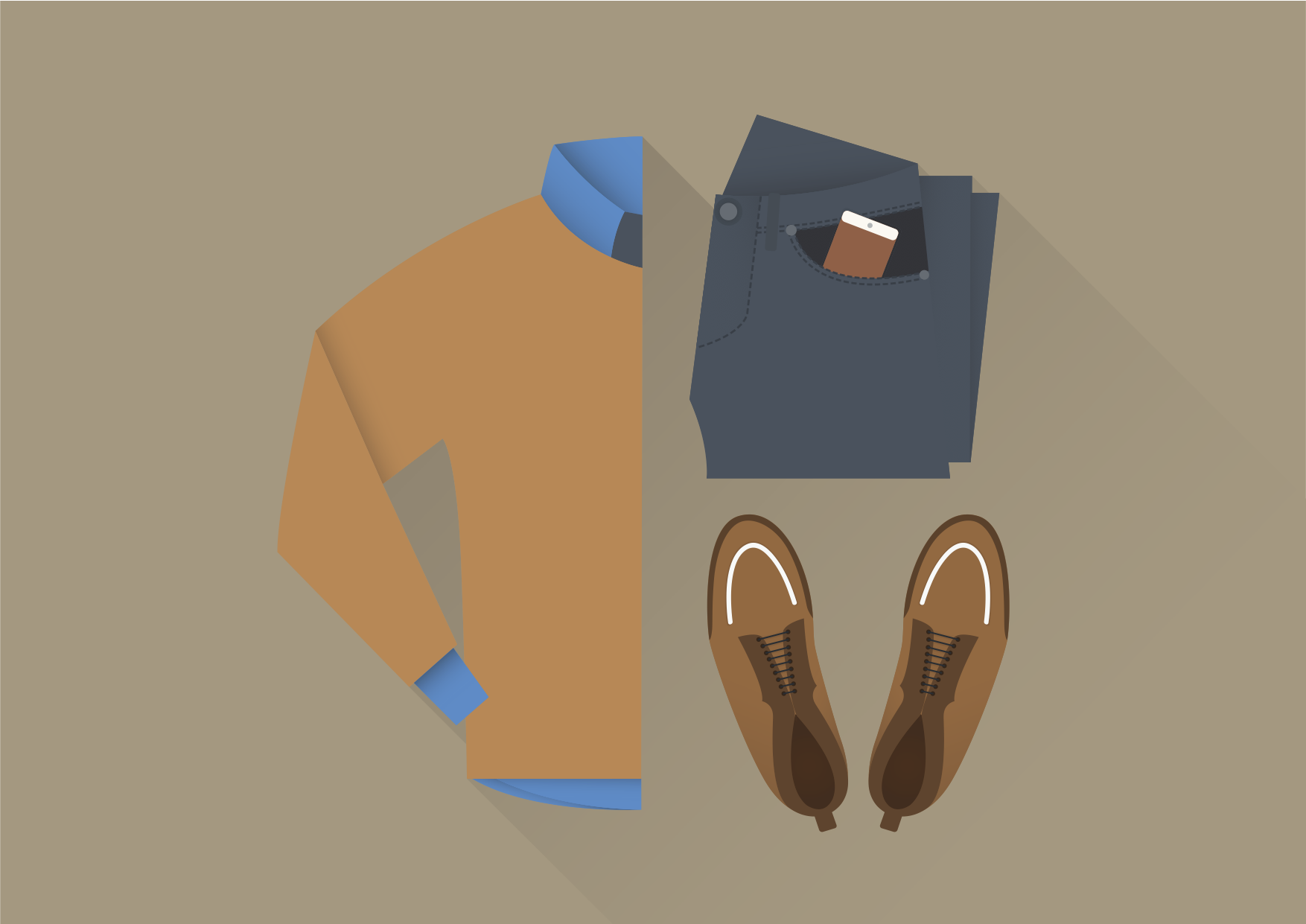A simple guide to developing your own signature style
Michael Calamia CONTRIBUTOR
Illustration: Alexandre Ost / AdobeStock.
The term “style” is used when referring to a lot of different things. It can be used in sentences such as, “That’s not my style,” or, “I like that style of pants,” and even, “He has a good sense of style.” However, in order to provide some measure of clarity, when referring to your own personal style, it’s better to use the term “aesthetic.”
An aesthetic is a common element of appearance in one’s wardrobe. It is coherent in most, if not all, items of a man’s wardrobe. For example, if my wardrobe consists mostly of oxford button-downs, chinos, and brown loafers, my aesthetic is “preppy.” Or if it consists mostly of various pairs of jeans, flannel shirts, and hard-wearing boots, my aesthetic is “rugged.” All clothing has an aesthetic, and when curated into a single entity, that person takes on the aesthetic.
You might be asking yourself, what are the different clothing aesthetics? I have already mentioned two of them, “preppy” and “rugged.” The last aesthetic is “street” which is often referred to as “urban.” These are the three major aesthetics that are most frequently seen amongst men. There are probably more, but for simplicity reasons, I’ll stick to these three.
The “preppy” aesthetic consists of inspiration from British and Italian styles of clothing. While the most formal garment of a preppy wardrobe is a navy suit, we probably don’t wear suits on a daily basis. I’d say the daily outfit consists of chinos with brown casual leather shoes, and either a polo shirt or a casual button-up. Other items include v-neck or crew neck sweaters, Chelsea boots, wool outerwear, and a smart-looking watch. The key to preppy style is sleek lines that, like Cary Grant once wrote, “should attract attention to the best lines of a man’s figure and distract from the worst.”
The “rugged” aesthetic is quite different but it can also overlap with preppy. It is usually inspired by the clothing of an outdoorsman or a blue collar worker. A rugged wardrobe consists of different types of jeans, long sleeve henleys, flannel shirts, chukka or combat boots, and a leather or denim jacket. Some other items in a rugged wardrobe are chunky knit sweaters, shawl collar cardigans, a suede jacket, and utility shirts. The key to a rugged wardrobe is functionality. Your clothing should protect you from the elements and make you feel like a man that isn’t afraid to get his hands dirty.
The “street” or “urban” aesthetic is probably the most difficult to categorize since it adopts elements from all aesthetics but manages to make it unique. It draws inspiration from different decades such as the ’50s, ’80s, and ’90s. While every urban individual has his own style, the common elements amongst their wardrobes are super slim, highly distressed denim, joggers or chino joggers, long line t-shirts, graphic tees, oversized sweatshirts, distinct outerwear, and footwear ranging from sneakers to boots. The key to a street style wardrobe is flair. This aesthetic likes to play with proportions and usually offers some sort of contrast between the upper and lower halves of the body. Also, staying trendy is the strength of this aesthetic and you will always feel in tune with the latest and greatest that fashion has to offer.
If you’re not sure what your individual aesthetic is, the easiest way to narrow it down is figuring out your taste. Look at different Instagram pages or Pinterest boards. What appeals to you and what do you like to wear? If you like to wear chinos with a polo and enjoy the finer things in life, you are preppy. If you are a guy that likes to wear denim or leather and enjoys the outdoors, you are rugged. Finally, if you are constantly looking at the latest Instagram pictures from Kanye West and like to wear joggers over everything, you are street. If you’re still unsure because you like elements from every aesthetic, don’t worry because that’s a good thing. Being able to incorporate different elements into your base foundation is an important step in developing your signature style. These are the first steps to having a basic understanding of the different aesthetics, and you have begun to take the first step in your style journey.




